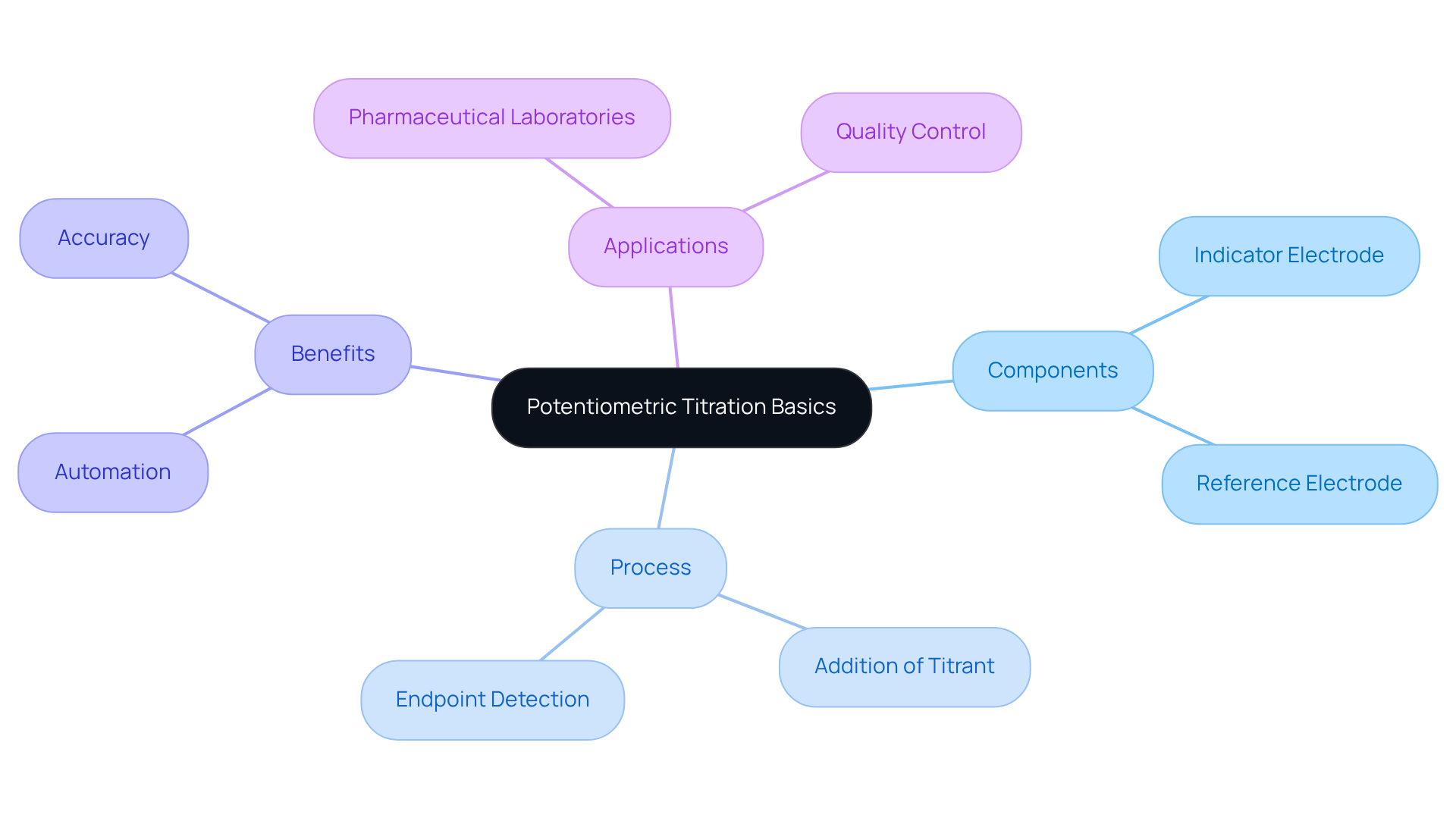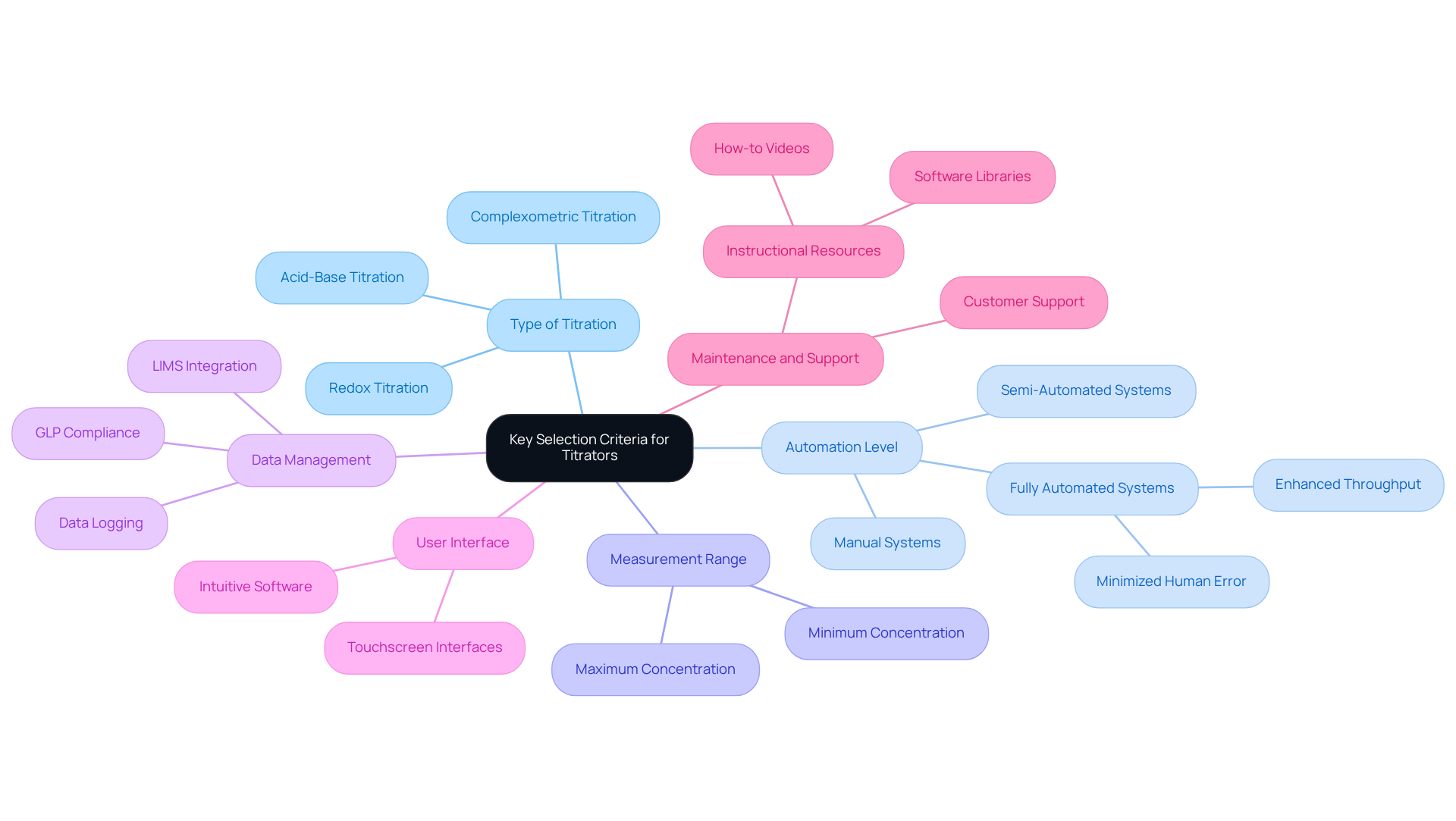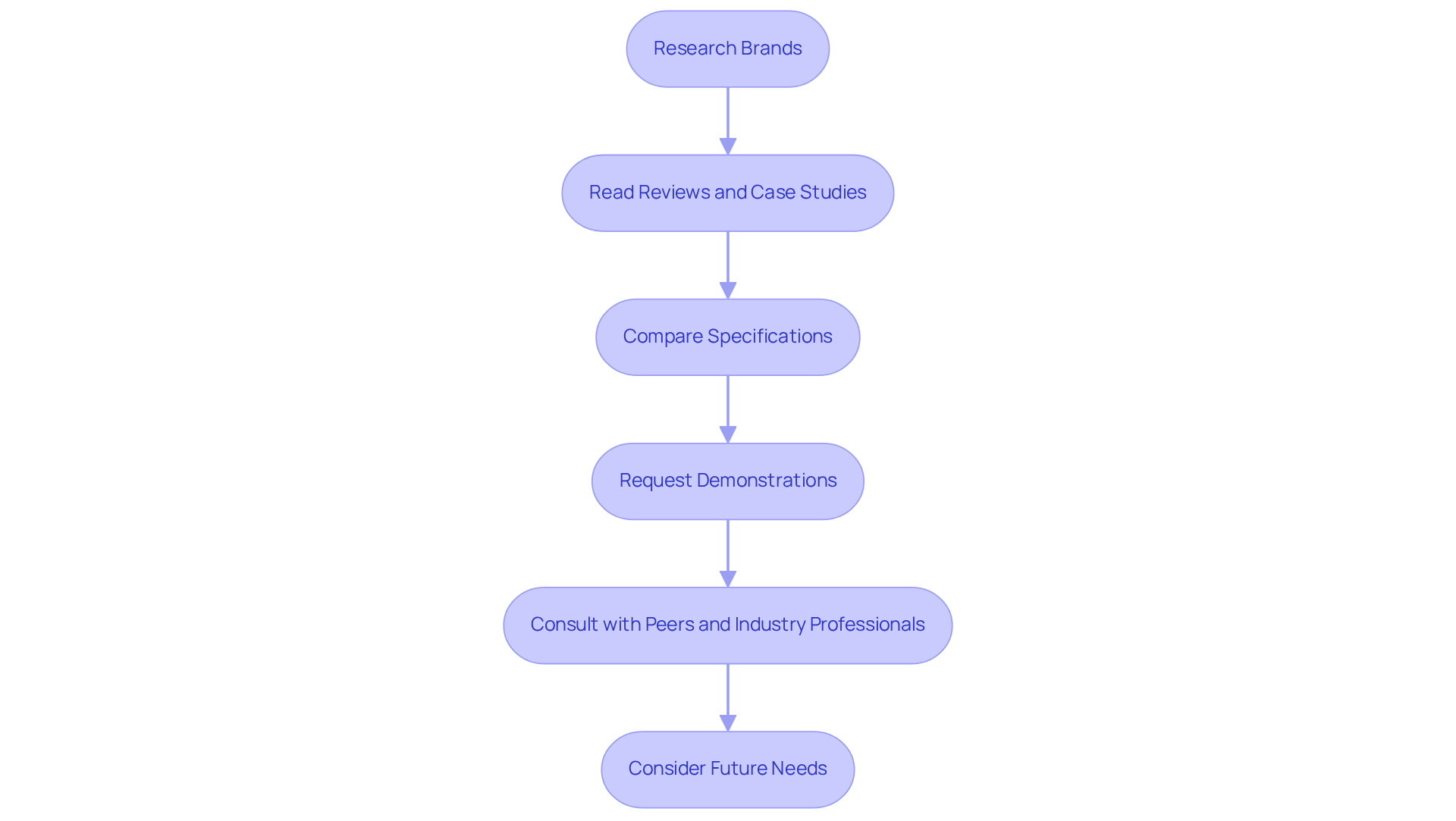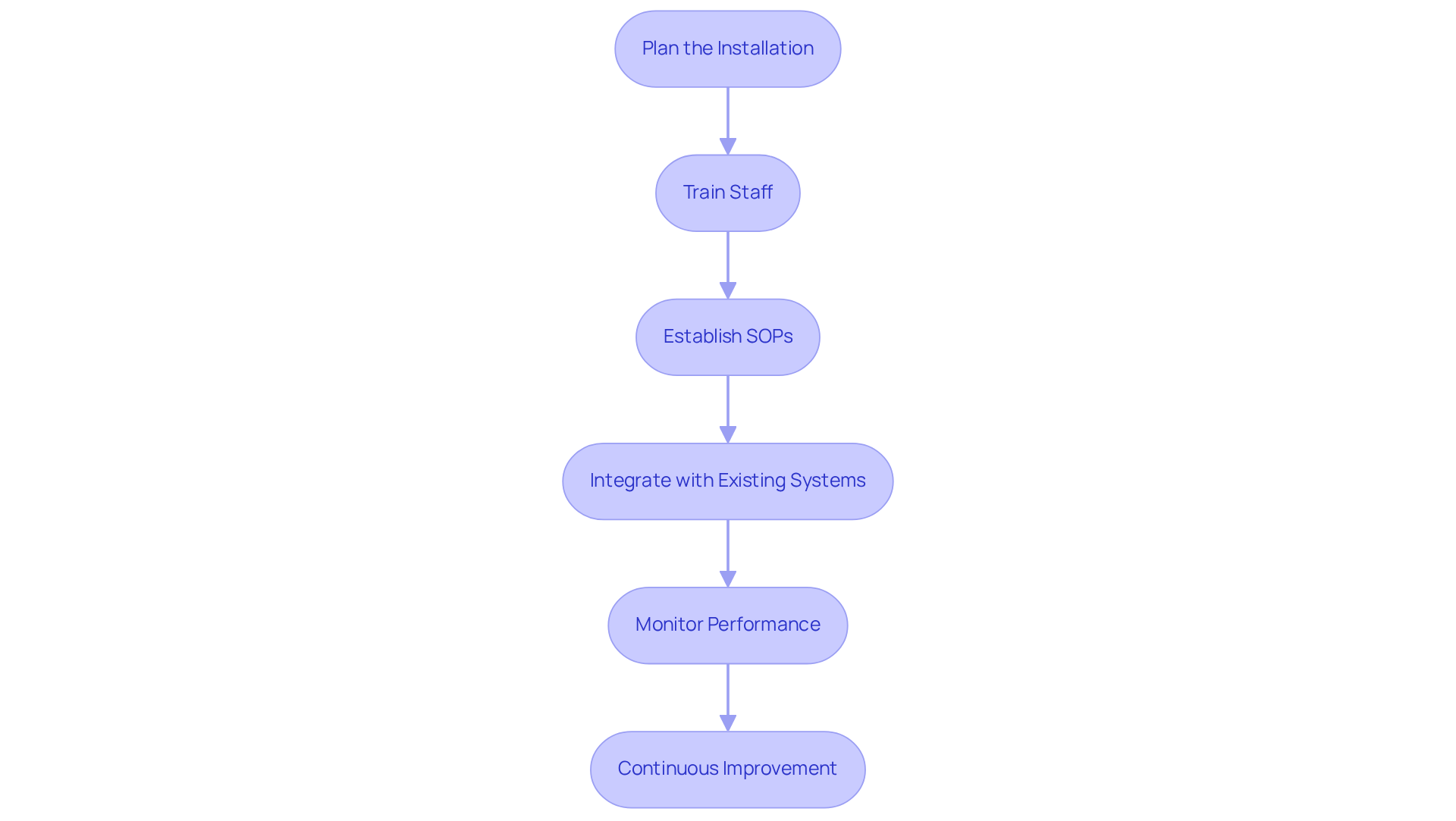Overview
This article highlights the critical role of potentiometric titrators in quantitative analysis and laboratory efficiency. By emphasizing their significance, it captures the reader's attention and builds interest in their application.
Essential criteria for selecting the appropriate titrator are outlined, including:
- The type of titration
- The desired level of automation
- Data management capabilities
Furthermore, the article details the necessary steps for successful integration into laboratory workflows, which ultimately enhances precision and productivity. Such insights not only inform but also generate a desire for high-quality scientific instruments, prompting action towards their adoption in laboratory settings.
Introduction
The precision of analytical techniques is crucial in determining laboratory results, and potentiometric titration emerges as a fundamental method in this field. This guide explores the critical elements of selecting and integrating a potentiometric titrator, equipping laboratories to improve both accuracy and efficiency in their analytical processes. Yet, with an abundance of models and features available, how can one effectively navigate the intricacies of choosing the right titrator that not only fulfills current requirements but also adapts to future demands?
Understand Potentiometric Titration Basics
The potentiometric titrator serves as a precise quantitative analytical technique pivotal for determining the concentration of an analyte in solution. This method utilizes a that employs two electrodes: an indicator electrode that responds to the analyte's concentration, and a reference electrode that maintains a stable potential. The measurement process with a potentiometric titrator involves the gradual addition of a titrant to the analyte solution until the endpoint is reached, which is signaled by a measurable change in potential from the indicator electrode. Mastery of the principles underlying acid-base reactions, redox reactions, and the Nernst equation is essential for accurately interpreting results. This foundational knowledge not only aids in selecting the appropriate titrator for specific laboratory applications but also enhances the overall efficiency and reliability of analytical processes.
Potentiometric analysis using a potentiometric titrator proves especially beneficial in pharmaceutical laboratories, where it has emerged as the favored approach for automated procedures. This advancement significantly enhances throughput and precision while minimizing manual effort. As highlighted, "automated procedures enable high throughput with minimal operator effort," underscoring the technique's efficiency. The robustness of this approach is evidenced by its application in determining active pharmaceutical ingredients (APIs) and excipients, ensuring compliance with regulatory standards. Furthermore, the technique's capacity to provide rapid feedback for quality control renders it indispensable in the pharmaceutical industry. Experts affirm, "the integration of potentiometric analysis into laboratory practices supports advancements in analytical chemistry," thereby enhancing both educational and practical outcomes.
Moreover, the coefficient of variation (CV) for effective content in chemical disinfectants assessed by a potentiometric titrator is notably lower than those derived using alternative approaches, emphasizing its accuracy. The expanded uncertainty of merely 0.32g/L for glutaraldehyde disinfectant further illustrates the reliability of this method.

Identify Key Selection Criteria for Titrators
When selecting a , it is essential to consider several key criteria that will influence the efficiency and accuracy of your laboratory.
Firstly, identify the Type of Titration required—be it acid-base, redox, or complexometric. Each application necessitates specific capabilities from the device, making this a critical first step in your selection process.
Next, evaluate the Automation Level of the device. Determine whether a manual, semi-automated, or fully automated system is needed. Automated systems significantly enhance throughput and minimize human error, which is why they are becoming increasingly popular in modern research facilities.
Additionally, confirm the Measurement Range of the device. It is crucial that the titrator can accommodate the expected concentration range of your samples. Review the specifications for both minimum and maximum measurable concentrations to ensure compatibility with your analytical requirements.
Moreover, consider the Data Management capabilities of the device. Opt for titrators equipped with data logging, GLP compliance, and connectivity options that facilitate smooth integration with information management systems (LIMS). These features are vital for maintaining accurate records and ensuring adherence to regulatory standards.
Furthermore, a user-friendly User Interface can significantly reduce training time and enhance operational efficiency. Look for devices that offer touchscreen interfaces and intuitive software, which simplify operation and improve user experience.
Lastly, assess the Maintenance and Support options available for the equipment. Reliable customer support and comprehensive resources, including instructional videos and software libraries, are essential for minimizing downtime and optimizing operational efficiency. By considering these criteria, you can ensure that your choice of a potentiometric titrator effectively meets the demands of your laboratory.

Evaluate Models and Brands for Laboratory Suitability
To effectively evaluate potentiometric titrators, follow these essential steps:
- Research Brands: Begin by familiarizing yourself with reputable brands recognized for their quality and reliability in scientific equipment. Notable names such as Metrohm, Thermo Fisher Scientific, and Hanna Instruments stand out in the industry for their trusted products.
- Read Reviews and Case Studies: Actively seek out user reviews and case studies that emphasize the performance of specific models in similar research environments. This research offers valuable insights into real-world applications and potential challenges. Pay close attention to feedback regarding the high precision levels in automated devices like the potentiometric titrator, which significantly mitigate human errors associated with manual titrations.
- Compare Specifications: Create a comparison chart that details the specifications of various models. Focus on essential characteristics such as measurement range, automation capabilities, and data management options to identify the best fit for your facility's needs. Additionally, consider ongoing advancements in sensor technology, automation features, and software integration that enhance the performance of a potentiometric titrator.
- Request Demonstrations: Whenever feasible, arrange for demonstrations or trials of the titrators you are considering. Hands-on experience with a potentiometric titrator is invaluable for evaluating usability and performance in your specific environment.
- Consult with Peers and Industry Professionals: Engage with colleagues or industry professionals to gather recommendations based on their experiences with particular models and brands. Insights from industry experts provide valuable context regarding the latest innovations and market trends.
- Consider Future Needs: Anticipate your facility's future requirements. Select a model that can adapt to evolving needs, such as or integrating with new technologies, ensuring long-term value and functionality. It is essential to highlight the trend towards automation in research facilities, which is increasing the demand for instruments that optimize workflows.

Integrate the Titrator into Your Laboratory Workflow
To effectively integrate your new potentiometric titrator into the laboratory workflow, follow these essential steps:
- Plan the Installation: Identify the optimal location for the device, taking into account accessibility, power supply, and proximity to related equipment. This strategic placement will facilitate ease of use and enhance overall efficiency.
- Train staff on the of the new device, specifically the potentiometric titrator, through comprehensive training sessions. Ensure that they are proficient in the software and data management features, which is crucial for maximizing operational efficiency.
- Establish Standard Operating Procedures (SOPs): Develop detailed SOPs for the equipment's usage, covering calibration, maintenance, and troubleshooting protocols. This will foster consistency and ensure compliance with regulatory standards.
- Integrate with Existing Systems: Connect the device to your laboratory information management system (LIMS) or other data management tools, if applicable. This integration streamlines data collection and reporting processes, enhancing workflow efficiency.
- Monitor Performance: Closely observe the titrator's performance and solicit feedback from users. This proactive approach will help identify potential issues early and facilitate necessary adjustments.
- Continuous Improvement: Regularly assess the titration processes and identify opportunities for optimization. Encourage staff to share insights and suggestions to enhance efficiency and accuracy in laboratory operations.

Conclusion
Mastering the selection and integration of potentiometric titrators is essential for enhancing laboratory efficiency and accuracy in analytical processes. Understanding the fundamental principles of potentiometric titration and recognizing the specific needs of your laboratory enables the selection of equipment that aligns with both current and future analytical demands.
Key considerations include:
- Identifying the type of titration required
- The level of automation needed
- The measurement range of the device
Furthermore, evaluating data management capabilities and ensuring a user-friendly interface can significantly improve operational efficiency. Researching reputable brands and gathering insights from peers further aids in making an informed decision. Ultimately, integrating the chosen titrator into the laboratory workflow through careful planning, training, and continuous improvement will maximize its effectiveness.
The significance of potentiometric titration extends beyond mere measurement; it plays a crucial role in ensuring compliance with regulatory standards and enhancing the quality of pharmaceutical products. By embracing these best practices, laboratories can leverage the full potential of potentiometric titrators. This not only drives advancements in analytical chemistry but also sets a solid foundation for future innovations.




